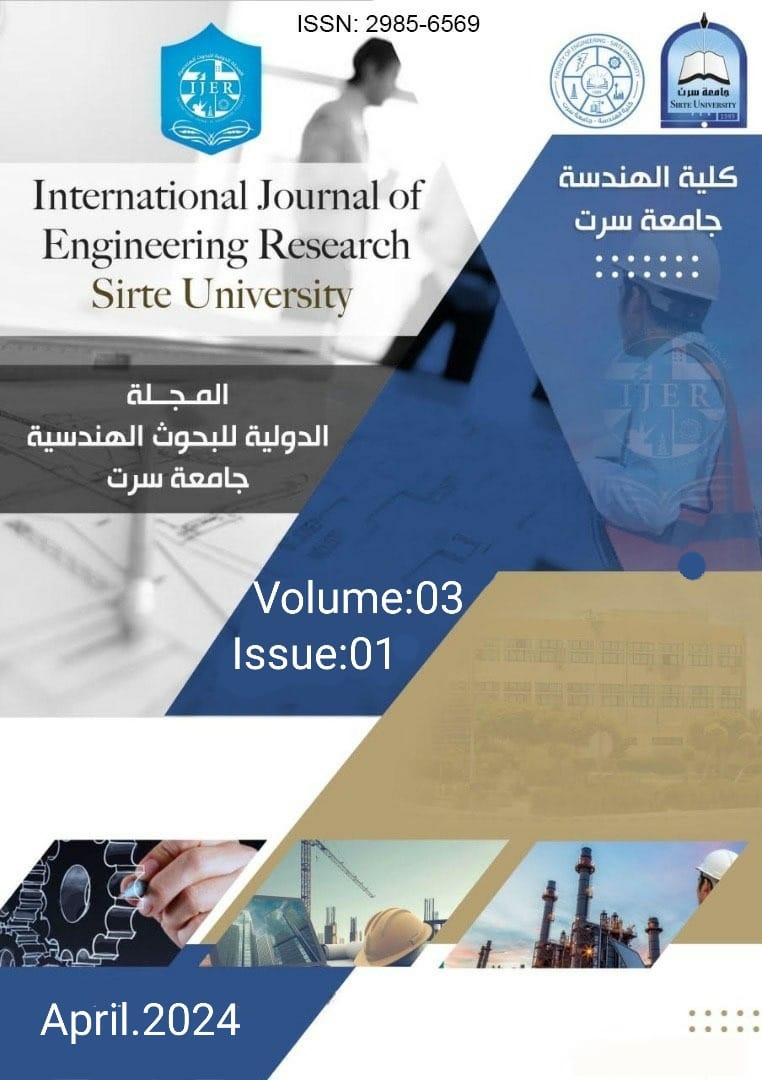A Comparative Study of Field Oriented and Backstepping Control Strategies for Wind turbine PM Synchronous Generator
Keywords:
Wind turbine generator, PM synchronous generator control, Field oriented control, backstepping controlAbstract
In this paper, a comparative study of Field Oriented Control and Backstepping Control methods has been conducted to control a Permanent Magnet Synchronous Generator for wind power application. These control strategies are described and designed, then implemented using the Matlab/Simulink environment. Finally, the two different strategies are compared in response to active power, current, voltage, electromagnetic torque, and rotor speed. FOC allows us to independently control the torque and the flux of our machine in the same way as a DC machine with separate excitation, where the inducing current controls the magnetic flux, and the induced current controls the electromagnetic torque. We transformed the stator instantaneous currents to two current components, one which controls the flux (along the d axis), and the other controls the torque (along the q axis). The adaptive Backstepping control relies on the nonlinear model of the controlled system. It harnesses the principles of the Lyapunov stability theory to regulate various parameters and uphold the overall system’s stability. The findings of this research showed that firstly, backstipping control method is faster, less ripple, and more stable than the FOC method. Secondly, the THD in FOC method is higher than in backstipping control method. Finally, both control techniques have sinusoidal current and voltage waveforms. So, they can satisfy the grid code.
References
Natural Resources Defense Council. Renewable Energy for America: Wind section. Available at http://www.nrdc.org/ energy/renewables/wind.asp. Accessed 2012 Jan 5.
Majout, B.; El Alami, H.; Salime, H.; Zine Laabidine, N.; El Mourabit, Y.; Motahhir, S.; Bouderbala, M.; Karim, M.; Bossoufi, B. A Review on Popular Control Applications in Wind Energy Conversion System Based on Permanent Magnet Generator PMSG. Energies 2022, 15, 6238. https://doi.org/10.3390/en15176238
Majout, B.; Bossoufi, B.; Bouderbala, M.; Masud, M.; Al‐Amri, J.F.; Taoussi, M.; El Mahfoud, M.; Motahhir, S.; Karim, M. Improvement of PMSG based Wind Energy Conversion System Using Developed Sliding Mode Control. Energies 2022, 15, 1625. https://doi.org/ 10.3390/en15051625.
Gunawan F.S. A Study of the Field-Oriented Control of a Permanent Magnet Synchronous Machine With and Without Position Sensor [Master Thesis]. Columbus (OH): The Ohio State University; 1997.
Youssef Errami, Abdellatif Obbadi, Smail Sahnoun, Mohammed Ouassaid, and Mohamed Maaroufi, ''Direct torque control method applied to the WECS based on the PMSG and controlled with backstepping approach'', AIP Conference Proceedings 1968, 030020 (2018); https://doi.org/10.1063/1.5039207.
El Mourabit Y, Derouich A, El Ghzizal A, El Ouanjli N, Zamzoum O. DTC-SVM control for permanent magnet synchronous generator based variable speed wind turbine. Int J Power Electric Drive Syst. 2017;8(4):1732-1743.
Majout, B.; El Alami, H.; Salime, H.; Zine Laabidine, N.; El Mourabit, Y.; Motahhir, S.; Bouderbala, M.; Karim, M.; Bossoufi, B. A Review on Popular Control Applications in Wind Energy Conversion System Based on Permanent Magnet Generator PMSG. Energies 2022, 15, 6238. https://doi.org/10.3390/en15176238
Bossoufi, B., Karim, M., Lagrioui, A., 2014a. MATLAB & Simulink simulation with FPGA Based Implementation adaptative and not adaptative backstepping nonlinear control of a permanent magnet synchronous machine drive. WSEAS Trans. Syst. Control 9, 86–100.





